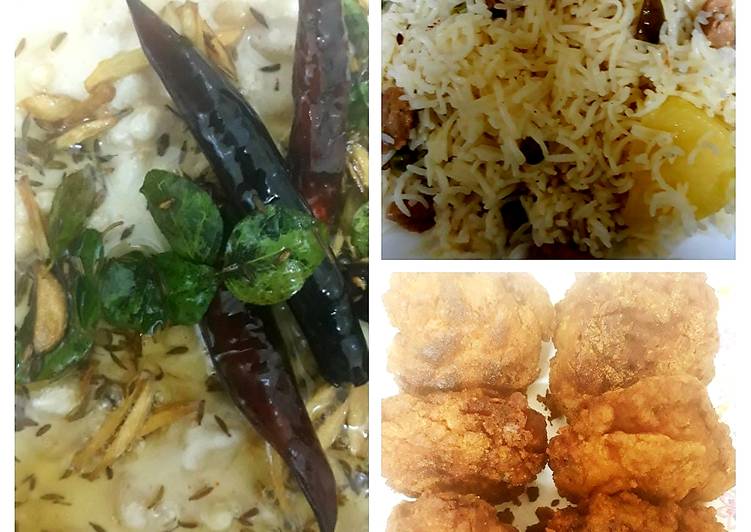
Hello everybody, hope you are having an amazing day today. Today, I’m gonna show you how to prepare a distinctive dish, chap-chaai/cap cai (indonesian chinese stir fry mixed vegetables). One of my favorites food recipes. For mine, I’m gonna make it a little bit tasty. This is gonna smell and look delicious.
Chap-Chaai/Cap Cai (Indonesian Chinese Stir Fry Mixed Vegetables) is one of the most popular of recent trending meals on earth. It’s easy, it is quick, it tastes delicious. It’s enjoyed by millions every day. Chap-Chaai/Cap Cai (Indonesian Chinese Stir Fry Mixed Vegetables) is something which I have loved my whole life. They are nice and they look wonderful.
Cap cai, sometimes spelled cap cay, is the Hokkien-derived term for a popular Chinese Indonesian stir-fried vegetable dish that originates from Fujian cuisine. Various vegetables such as cauliflower, cabbage, Chinese cabbage, Napa cabbage, carrot. Cap cay or cap cai (cap = ten; cai = vegetable; cap cai = mixed vegetables) is an Indonesian stir fried vegetable dish that is influenced by chinese food.
To get started with this particular recipe, we have to prepare a few ingredients. You can have chap-chaai/cap cai (indonesian chinese stir fry mixed vegetables) using 14 ingredients and 9 steps. Here is how you cook that.
The ingredients needed to make Chap-Chaai/Cap Cai (Indonesian Chinese Stir Fry Mixed Vegetables):
- Get 2 carrot
- Make ready 2 cabbage
- Prepare 100 gram mushroom (i use button mushroom/champignon)
- Take 2 pokchoy (chinese cabbage)
- Get 1 frying beaten egg (optional)
- Take 1 garlic
- Prepare 1 tsp black pepper
- Prepare Sauce:
- Prepare 4 tbsp oyster sauce
- Prepare 1 tsp salt
- Make ready 1 tsp buillon powder (optional)
- Get 2 tbsp flour
- Get 100 ml water
- Prepare 3 tbsp vegetable oil
Cap cai sometimes spelled cap cay (Chinese: 雜菜; pinyin: zácài; Pe̍h-ōe-jī: cha̍p-chhài; literally: 'mixed vegetables') is the Hokkien-derived term for a popular Chinese Indonesian stir fried vegetable dish that originates from Fujian cuisine. Stir-Fried Choy Sum With Garlic (Stir-Fried Sawi) (Stir-Fried Cai Xin) - Home Cooking. Trova immagini stock HD a tema Capcay Chinese Indonesian Stir Fry Vegetables e milioni di altre foto, illustrazioni e contenuti vettoriali stock royalty free nella vasta raccolta di Shutterstock. Migliaia di nuove immagini di alta qualità aggiunte ogni giorno.
Instructions to make Chap-Chaai/Cap Cai (Indonesian Chinese Stir Fry Mixed Vegetables):
- Wash all the vegetable ingredients
- Chop-chop pokcoy (chinese cabbage)
- Chop-chop cabbage
- Chop-chop carrot and mushroom
- Chop-chop fried egg
- Heat pan and add vegetable oil and garlic and black pepper. Then stir fry carrot until cooked, add mushroom inside. Then stir fry. Add chopped cabbage, chinese cabbage and egg. Stir fry
- Add salt, buillon powder, oyster sauce then stir fry again
- Put flour in a glass then add water. Then disolve the flour. Then add it in frying pan. Then Stir fry all until cooked. Then test taste if you still need salt you can add it
- Serve it. We usually serve it with rice
Photo about Ready to serve stir fried cap cai or mixed vegetable, chinese cuisine in Indonesia. Trova immagini stock HD a tema Cap Cay Cap Cai Indonesianchinese Vegetable e milioni di altre foto, illustrazioni e contenuti vettoriali stock royalty free nella vasta Cap cay or cap cai, an Indonesian-Chinese vegetable dish, on a white bowl, on a marble table. Cap cai sometimes spelled cap cay is the Hokkien-derived term for a popular Chinese Indonesian stir fried vegetable dish that originates from Fujian cuisine. Various vegetables such as cauliflower, cabbage, Chinese cabbage, Napa cabbage, carrot. Chinese Indonesian stir-fried vegetable dish that originates from Fujian cuisine.
So that is going to wrap this up for this special food chap-chaai/cap cai (indonesian chinese stir fry mixed vegetables) recipe. Thank you very much for reading. I’m sure that you can make this at home. There is gonna be more interesting food at home recipes coming up. Remember to save this page on your browser, and share it to your loved ones, colleague and friends. Thanks again for reading. Go on get cooking!

